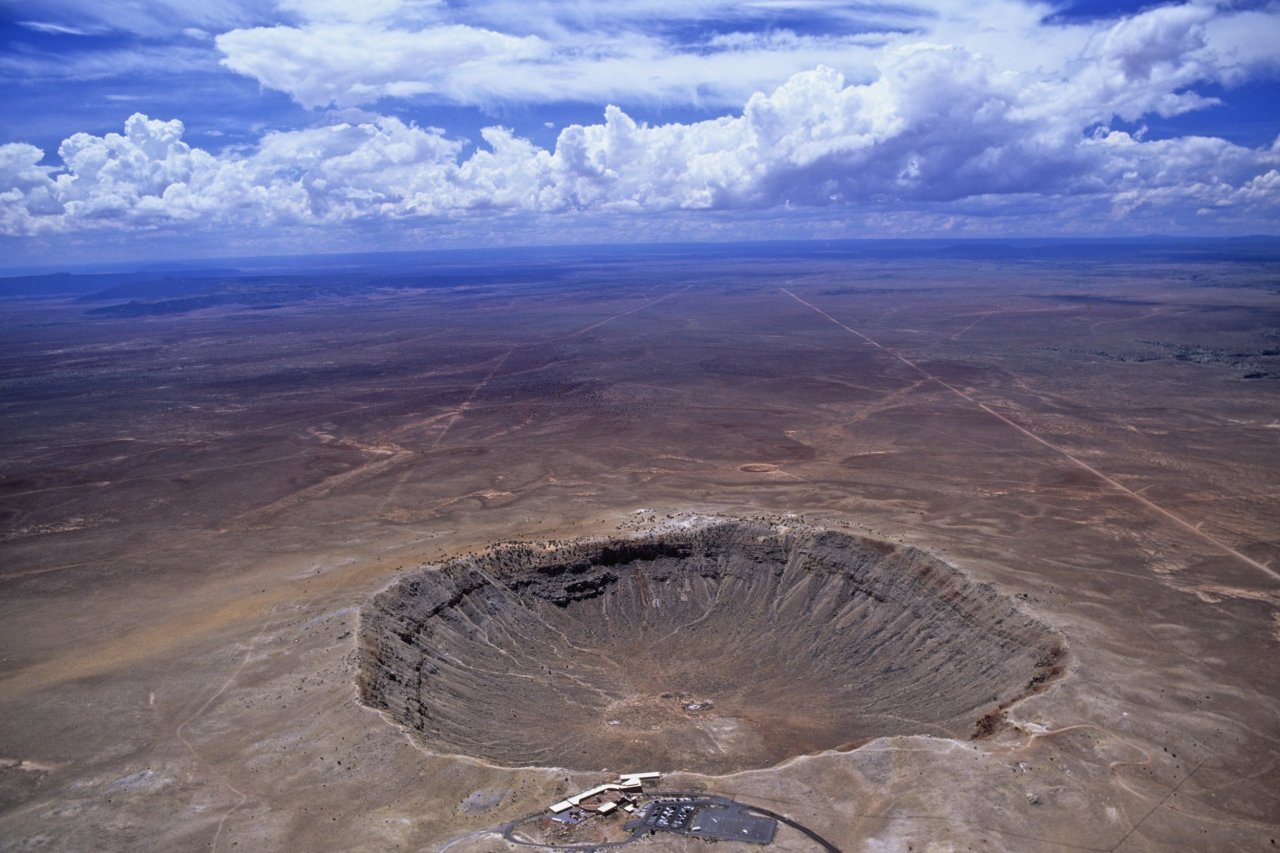
Earlier this spring, as violence and chaos drove thousands of refugees onto rickety boats off Libya, with some drowning on the grueling voyage to Italy, scientists gathered on the outskirts of Rome to discuss another sort of catastrophe. Astronomers and physicists from some of the world's top institutions grappled with a dire scenario: An asteroid possibly as large as 1,300 feet in diameter—big enough to cause epochal damage—was hurtling toward Earth, and the countries likely to be hit included some of the poorest and most unstable in the world. Policymakers bickered over whether to try to blow it up or move it, and nations nearly went to war over whether deflecting it would make the fiery rock more likely to land on them.
Relax. It was only a drill. Had it been a real emergency, you would have been instructed to kiss the world—or a large chunk of it—goodbye.
Watching this five-day asteroid war game from the wings were two Americans, one from the scientific world and one from the military. These elder statesmen of what's called planetary defense have been responsible for reminding policymakers that the planet and all life on it have been shaped by big rocks from outer space slamming into it. Dave Morrison was one of the first researchers to suggest that, unlike the dinosaurs made extinct by an asteroid impact, we might be able to defend ourselves. Former U.S. Air Force Lieutenant Colonel Lindley Johnson was eventually put in charge of NASA's Near-Earth Object (NEO) Program division after first suggesting in the 1990s that the Air Force track asteroids. These men, along with all the dedicated planetary defenders around the world, are proud (and relieved) that the Big Question has evolved from what if a cataclysm-inducing space rock is aiming for us—we now know an impact is inevitable—to what will we do about it.
That question was the main topic of that mid-April meeting held in a conference hall in Frascati, a pleasant suburb of Rome. The European Space Agency had invited astronomers, physicists, nuclear engineers and mathematicians to discuss the slim possibility of a space rock smashing into Earth and causing regional damage or maybe even the end of civilization. The goal was, as it has been for the last six Planetary Defense conferences, to share information about identifying asteroid threats and the methods for saving us all.
The focus this year was on exploring whether nations would collaborate in the face of such a threat. Scientists today can tell us, with various degrees of certainty, that an object is on track to smash into the planet in, say, 200 years, and they believe we probably have the technology to stop it. But nobody knows how human beings could or would cooperate to face a global peril. And in an age when many politicians deny man-influenced climate change, can we even count on them to believe the asteroid hazard is real?
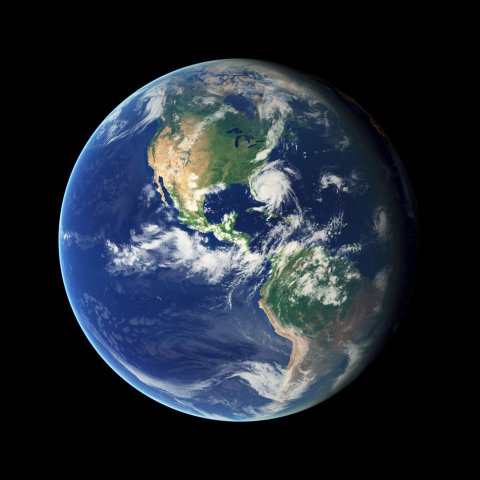
Huge Blind Spot
Morrison, astronomer Carl Sagan's first doctoral student, was in 1989 one of the first scientists to warn the public about asteroids, with Cosmic Catastrophes, a book he co-wrote with astronomer Clark Chapman. "Thirty years ago, there was no research on near-Earth objects," he says. "There weren't that many known and hardly anything to study."
Since then, the field has grown to include national space agencies, Congress, the United Nations and labs filled with mathematicians, physicists, engineers, rocket scientists and even designers of nuclear weapons. Thanks to their efforts, more than 150,000 asteroids are now registered with the Smithsonian's Minor Planet Center. The defenders estimate there are tens of thousands to hundreds of thousands more out there that we cannot see, many in our blind spot—hidden by the sun. About 12,700 of the identified ones are categorized as NEOs, with orbits that come within 121 million miles of the sun. NASA estimates that about 1,000 NEOs are civilization-enders—larger than a half-mile in diameter. None of the behemoths seems to be a likely threat, but about 1,600 other mapped NEOs may be headed our way, and an impact could kill millions.

Megadeath in the Yucatán
The first comet was discovered in the 17th century—although comet-like objects have been sighted throughout history, showing up in biblical and other ancient accounts. The first asteroids were identified in the 19th century, but not until the early 20th century did we realize that some of them cross Earth's orbit. Scientists now know that there are thousands of "Earth crossers," and that we're more than a little fortunate that Jupiter and Saturn absorb many of the asteroids that might otherwise pummel Earth.
The late geologist Gene Shoemaker, a science prodigy who graduated from the California Institute of Technology at age 19, was examining lunar craters in the 1950s for the U.S. space program when he determined that they were caused by impacts. Eventually, he was appointed head of the U.S. Geological Survey's Astrogeology Science Center in Flagstaff, Arizona, where he and his team began mapping asteroids and studying the mechanics of meteorite impacts. With another scientist, Edward Chao, he discovered coesite, a type of silica produced in a violent impact. But his most important find—in terms of planetary defense—was Comet Shoemaker-Levy 9, which smashed into Jupiter in 1994. It was the first extraterrestrial impact human beings had predicted and then observed in real time. This gave scientists confidence that similar calculations could be made for Earth.
Around the same time that Shoemaker was compiling his notes about unusual, impact-related silicon deposits around Meteor Crater, near Winslow, Arizona, geologist Walter Alvarez discovered a layer of iridium-infused clay at the geological strata separating the Cretaceous and Tertiary periods—in other words, between the era of the dinosaurs and our epoch. Iridium is extremely rare on Earth but common in meteorites. Geologists soon found a similar iridium layer at the same geological strata in other parts of the world. They then postulated that a catastrophic impact had occurred around the time the dinosaurs became extinct, and scientists even know where the asteroid that killed off the dinosaurs likely hit—just off the Yucatán Peninsula, at Chicxulub.
In the decades since, geologists have learned more about how catastrophic extraterrestrial impacts changed our planet. They believe our moon is a chip off a collision between two Mars- and Venus-size objects sometime during Earth's first 100 million years. After that impact, Earth was enveloped in a hot silicate atmosphere, leaving only heat-loving organisms in rocks a half-mile or more beneath the surface, and from that all future life developed. Numerous smaller objects, with diameters in the 5- to 10-mile range, like the one that caused the dinosaur extinction, have also slammed into the planet, causing lesser but still catastrophic changes.
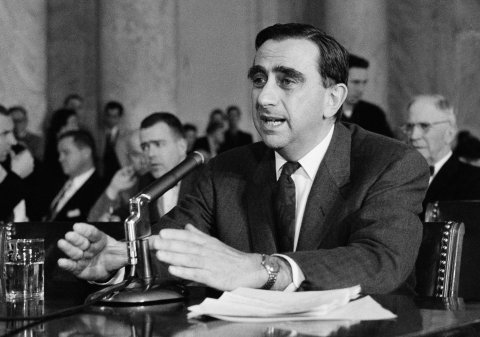
The Bomb Option
When Chapman and Morrison published their 1989 book about cosmic catastrophes, they covered a broad range of menacing events, including comets, asteroids and supernovas. But both men thought the asteroid impact scenario was the most intriguing because mankind could theoretically do something to prevent one. In 1990, congressional staffers invited Morrison to present what he and others were finding about space rock hazards. A year later, Congress authorized NASA to study asteroids and how to deflect them.
Chapman and Morrison gathered together experts in astronomy, physics and geology to study the problem. The team concluded that the most dangerous asteroids were about 1 mile in diameter. Such a rock (one-tenth the size of the one that erased the dinosaurs) could have civilization-ending effects, mainly because weather alterations, caused by impact-related dust, would result in the starvation of billions of people. So they recommended sky surveys to find all objects of that size.
Besides astronomers and geologists, the planetary defender community attracted nuclear weapons designers, about to be left unemployed by the end of the Cold War, who found a new market for their expertise in massive impacts and creating a nuclear option for asteroid defense. Among them was Dr. Strangelove himself, Edward Teller, one of the fathers of America's nuclear weapons program. Peace-loving Sagan was also involved. The two men had argued bitterly over nuclear weapons, but they found common ground in the idea that nuclear weapons could save us from an asteroid.

The Little Prince's Asteroid
Planetary defense was not left to civilian scientists alone. The chief of NASA's asteroid program, Johnson, is a retired colonel who started in the Air Force as a satellite tracker. He got into the asteroid business in 1994 when he wrote a paper on what capabilities the Air Force might need by 2020. Johnson focused on asteroids and called his paper "Preparing for Planetary Defense"—thereby coining the term. After 23 years in the Air Force, Johnson announced he was retiring in 2003, and NASA enlisted him to run its Near-Earth Object Program.
A third American played a pivotal role in the development of planetary defense. Russell "Rusty" Schweickart was the first Apollo astronaut to walk in space, on the Apollo 9 mission. In 2002, he founded the B612 Foundation (named after the asteroid in Antoine de St. Exupéry's story The Little Prince). He was inspired by geologist Norm Sleep's lecture about how massive asteroid impacts 3.3 billion years ago—long before the dinosaurs—had boiled the oceans and formed the building blocks of life as we know it. Schweickart devoted several decades to proselytizing for deflection and mitigation technology. He also urged fellow astronauts to get involved and found some like-minded space explorers, including former astronaut Ed Lu, who now heads B612.
Schweickart has traveled the world to encourage a coordinated global response. "I fear there's not enough of a collective survival instinct to really overcome the centrifugal political forces," he says. "That is, in a nutshell, the reason we'll get hit. Not because technically we don't know it's coming, or we can't do something about it."
Armageddon
When an Indian Ocean tsunami killed 230,000 in 14 nations on December 26, 2004, it captured the world's attention and obscured a nearly simultaneous, albeit theoretical, brush with Armageddon. Just 48 hours before the Indian Ocean disaster, scientists made an alarming calculation: An 885-foot-diameter hunk of dark space rock was heading our way with a 1 in 25 chance of smashing into Earth in 2036, an impact with the potential force of 58,000 Hiroshima A-bombs. The Indian Ocean earthquake that launched the tsunami released less than half that force.
The ominous spinning rock was soon renamed Apophis, after an Egyptian god, "the un-creator." For six months after it was first discovered, the asteroid wasn't even deemed interesting by the Minor Planet Center. But by December, astronomers at telescopes in Puerto Rico and Arizona had gathered enough data to enable scientists at the Jet Propulsion Laboratory (JPL) in Pasadena, California, which tracks NEO orbits, to project that Apophis had a 2.4 percent chance of impact in 2029, and an alarming 1 in 25 chance of smashing the Earth on an orbital swing in 2036. That prompted more scientists to start working feverishly. Eventually, they refined the prediction down to a much more unlikely threat of 1 in 250,000. When Apophis makes its close approach, it will pass between us and our satellites and be visible to the naked eye.
For the planetary defenders, such an event is cause for glee, not alarm.
The potential death star was something planetary defenders desperately needed—an event to wake up politicians and the public. But the publicity it garnered was double-edged. The public imagination was already primed by a pair of Hollywood disaster movies in 1998 (Deep Impact and Armageddon) featuring annihilation from the skies. Now, with a real apocalyptic catastrophe in the form of a killer tsunami in Indonesia, as well as an asteroid threat, the public wanted answers. And no one could give an honest answer without highlighting a single word that journalists and the public don't want to hear.
That word is "uncertainties."
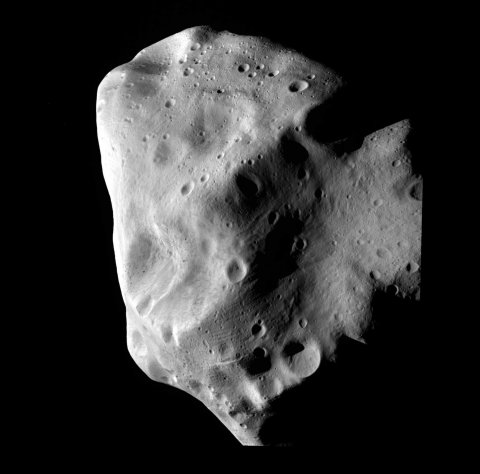
'Boom Goes London, Boom Paris…'
Canadian-born astronomer Paul Chodas knows that word only too well, not least because he's often had to repeat it to journalists who know he's the go-to man whenever an asteroid makes the news. Minding asteroids is part of his job at the JPL, where he manages NASA's Near-Earth Object Program office. There, he feeds an asteroid's many variables—spin, mass, the way it reflects and absorbs light and radiates heat, and the gravitational pull of other asteroids nearby—into a supercomputer that then spits out an orbit prediction. Chodas and his colleagues for a time had calculated Apophis had a 1 in 25 chance of colliding with Earth. When I asked him whether those frightening numbers scared or excited him, he smiled and admitted it was a thrill.
His predictions, though, are filled with variables that sometimes involve plus or minus 18 million miles—a fairly significant distance even by space standards. Chodas and his colleagues grapple with uncertainties that start out small and grow in huge orders of magnitude. For example, a loss in weight equal to that of three grapes can mean the difference between an Earth hit or miss. The speed of an asteroid's spin is affected by heat, which is in turn affected by the reflectivity of the rock's surface. The vast variety of asteroids complicates the task—some are flying rubble piles, some are solid rocks, some are dust held together by gravity, and many have satellites.
The JPL crew continually refine complex equations, attempting to predict orbits with as few as six sightings. And they are getting better all the time.
JPL got another real-time chance to test equations seven years ago. One October morning in 2008, Chodas's cellphone rang as he was dropping off his son at school. It was the Minor Planet Center at Harvard, reporting that an object appeared to be speeding toward Earth. Chodas plugged the coordinates of the rock into the computer and was soon able to predict an impact time and location—just 20 hours hence, in the Middle East. JPL then contacted Johnson at NASA, who called the State Department (someone also called President George W. Bush, according to a memoir by his then-press secretary). Johnson was especially concerned that governments in the volatile region be notified. "For a while, we had it predicted heading toward Mecca," he says, drily. "And that was a concern."
At JPL, Chodas and colleague Steve Chesley drilled into the numbers and soon had a precise impact point, near a fly-specked outpost, population 10 people, deep in the Sudanese desert. Chesley identified the location on his GPS, while Chodas grabbed an atlas. When he and Chesley compared notes, they realized they had come up with the same exact impact location. Chodas was elated. "I realized we were the only two people on the entire planet who knew exactly where this thing was going to land," he says.
After the impact, JPL scientists were able to direct a team of university students from Khartoum to the predicted impact point. Even Chodas was surprised when the Sudanese students found remnants right where his equations had led them to look.
Still, frightening uncertainties remain. The last significant asteroid event was one that no one saw coming. In 2013, a "merely" bus-size space rock blew up in the sky near the town of Chelyabinsk, Siberia, with a force similar to a nuclear bomb. Windows were blasted, and 1,000 people went to the hospital. Because many drivers in Russia mount video cameras on their dashboards, scientists had a plethora of YouTube images of a streaking light, followed by a blinding explosion in the sky, that they used to pinpoint the object's trajectory.
Chelyabinsk gave the planetary defenders another lesson in what even a relatively small asteroid, bursting not on impact but in the air, can do. And they know it's only a matter of time before something like that happens over New York, London, Delhi or Tokyo.

Find Them All!
Congress passed the George E. Brown Act in response to the Apophis threat, and President Bush signed it into law in 2005, instructing NASA to detect, track, catalog and characterize the physical characteristics of asteroids larger than about 460 feet across. (Brown had been a much-admired chairman of the House Science Committee and an early voice on climate change and near-Earth threats.) In other words, the U.S. was finally doing what Morrison had suggested 15 years earlier: trying to find them all.
The mapping program involved three main elements: telescopes in Arizona and Hawaii and a JPL project called NEOWISE, the Near-Earth Object Wide Infrared Survey Explorer—a fairly small, space-based telescope operating at infrared wavelengths. In fall 2011, JPL's Amy Mainzer, who heads the mapping effort, announced that the project had collected enough data for experts to declare Earth is—for now—not a target for any huge, civilization-ending mass. But hundreds of thousands of unmapped smaller objects are winging around near our planet; Mainzer says only 1 percent of NEOs above 60 feet in diameter have been found. They pose a different and perhaps more vexing challenge because they are harder to find and more likely to hit us. Objects as small as 450 feet across would cause severe regional damage, and the mapping project has identified only an estimated 25 percent of them. Geologists believe objects between about 150 and 450 feet in diameter hit Earth every 100 to 300 years, and some have wreaked havoc. NASA is considering Mainzer's proposal to build a new space-based telescope that will find and measure many more asteroids. If approved, it could be operational by 2020.
'As Big as the White House'
Deflecting an asteroid is an embryonic science. There are three schemes, roughly classified as Nuke, Kick or Tug. The Nuke option would aim an explosive device (not a conventional bomb)—or, more likely, many devices—at an asteroid on a collision course. Despite its Hollywood-grade visual potential, the planetary defense community regards it as a last-ditch effort.
The other two options are the Kick (aiming a projectile called a "kinetic impactor" at an asteroid to knock it slightly off its orbit) and the Tug (shooting an unmanned spacecraft into the orbit of the asteroid to operate as a "gravity tractor" with enough mass to pull the rock off its natural trajectory).
All three schemes depend on man's ability to navigate a craft to an asteroid. A European Space Agency project did that last November, when the Rosetta craft landed the Philae probe on a comet and sent data back to Earth for 64 hours before its batteries died.
None of the asteroid mitigation techniques have been tested, but NASA hopes to demonstrate the Tug method as part of the Asteroid Redirect Mission expected to take place in 2020, which would launch a robotic spacecraft to break off and grab a chunk of an asteroid. As part of the project, the robotic spacecraft, with its cargo, will remain in orbit around the asteroid for 100 days. Scientists believe the enhanced mass of the craft with its load of rock will eventually pull the asteroid slightly off its trajectory.
The device would then drag the chunk of the asteroid back to the moon's orbit sometime in the 2020s and leave it there, allowing future experiments on it.
The idea of dragging a space rock into orbit around the moon, essentially giving the moon a satellite, still sounds like science fiction, but planetary defenders want nations and space agencies to put real money behind testing, and for policymakers, journalists and scientists to discuss the threat calmly and realistically, somewhere between the poles of mass panic and dubious hilarity.
To that end, the defenders have devoted hours to discussing questions like what and how to tell the public about the risk. Currently, scientists rely on an ad hoc system of news releases from NASA couched in earthbound analogies: Asteroids are "big as the White House" or "an SUV," and their predicted impact effects are measured in numbers of "Hiroshimas."
The public will be hearing with increasing frequency about objects veering relatively close or even speeding toward us. Chodas and others have suggested NASA find a way to talk about asteroid risks as meteorologists talk about hurricanes, with news releases that update tracking hourly, coordinated with a government department for disasters like the Federal Emergency Management Agency and local authorities who could oversee an evacuation.
The public will also be hearing more about asteroids later this month, when a motley crew of astronomers, physicists, rock stars and filmmakers get behind what's being billed as the world's first "Asteroid Day," on June 30. The annual event's date was selected because on June 30, 1908, an asteroid flattened thousands of square miles of remote Siberian forest, in what's known as the Tunguska event. The organizers and participants include Queen guitarist and astrophysicist Brian May, U.K. Astronomer Royal Lord Martin Rees, American scientist Bill Nye and astronauts Lu and Schweickart. Events are planned in cities around the world, and live presentations will be beamed from London and San Francisco. The Asteroid Day organizers are also circulating an online petition called "The 100X Declaration" calling for a hundredfold increase in the mapping and tracking of asteroids. "There are a million asteroids in our solar system that have the potential to strike Earth and destroy a city, yet we have discovered less than 10,000—just one percent—of them," the document states. "We have the technology to change that situation."
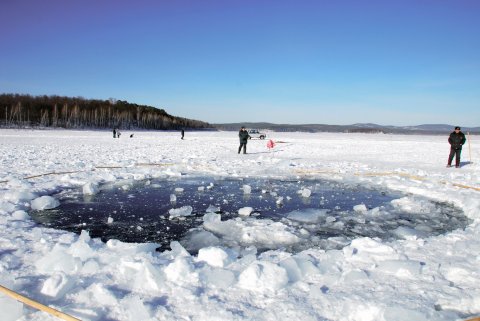
Asteroid Rage
After eight years of deliberating, a U.N. committee in March finally announced the creation of a global early-warning system to protect the planet from a potentially city-destroying, tsunami-causing or, worse, civilization-ending large space object. The planetary defenders tested the concept in mid-April by playing the war game in the suburbs of Rome. Their mission: Save the planet from an asteroid possibly four times the size of a football field. The science and policy they tested were so realistic that their online daily press releases had to be emblazoned with bright red boxes proclaiming, "Exercise. Exercise. Not a Real World Event."
NASA's Johnson says the exercise proved to him that humans can mount an asteroid response—and it can be affordable, a key element when trying to sell politicians on preventing disasters that might very well not occur in our lifetime. "A worldwide effort of a few hundred experts and a few hundred million dollars per year would be quite sufficient to identify any potential impact threat and develop the means to prevent it," he says.
Chodas created a realistic scenario for the game. At the beginning, the conference participants learned that scientists had "discovered" an asteroid estimated to be somewhere between 460 and 1,300 feet in diameter, apparently on course to smash Earth in seven years, on September 3, 2022. The participants had divided into three role-playing groups—national and international policymakers, the media and scientists—and played out over five days what humans might do.
In the first year after the asteroid's discovery (days one and two of the conference), the participants found out that scientists had used available information to estimate a long "risk corridor" that stretched from Southeast Asia to Turkey. As the asteroid moved through its orbit, scientists continually refined their predictions and homed in on its size and likely damage point, and they advised policymakers on the options. By August 2019 (day four of the conference), the participants learned that global policymakers had agreed to fire six kinetic impactors at the asteroid, and they reached their target six months later. But a debris cloud from that impact prevented observers and policymakers from knowing what had worked until January 2021 (day five of the conference), when it was announced that two of the six KIs had missed, one hit and fractured the asteroid, and another hit and broke off a chunk that remained on a path toward Earth and was hidden from view by sunlight. Two others hit the remains of the now-broken asteroid, deflecting the largest piece of it.
The following year (later on day five), the participants found out that the broken fragment was still hurtling toward Earth and remained a significant hazard. It would slam us on September 3, 2022, somewhere in India, Bangladesh or Myanmar. About a month before its projected impact, scientists were able to pinpoint the object's size (about 261 feet in diameter), as well as the likely time of impact (9:50 a.m.) and precise location (Dhaka, Bangladesh, population 15 million). They predicted the explosion would release 18 megatons of energy, similar to that asteroid explosion in 1908 that flattened thousands of miles of Siberian forest.
"The number one lesson I took away is that we need infrared, in-space telescopes that could tell us more about the sizes of these objects," Chodas says.
The exercise ended on a cliff-hanger, with a massive, flaming rock closing in on a teeming, impoverished Asian city. Having done the best they could, the planetary defenders hung up their hero lanyards, packed their suitcases, checked out of their hotels and headed for the airport, leaving the planet forewarned.
Correction: An earlier version of this story incorrectly stated that the George E. Brown Act instructed NASA to track asteroids larger than 85 miles across. The George E. Brown Act covers asteroids of 140 meters, or roughly 460 feet, across. In addition, the story incorrectly stated that 12,700 of the identified ones are categorized as NEOs, with orbits that come within 121 million miles of Earth's. Their orbits come within 121 million miles of the sun.
About the writer
Nina Burleigh is Newsweek's National Politics Correspondent. She is an award-winning journalist and the author of six books. Her last ... Read more













